- Folio No. 9
- About
- Feral Parrot : The Blog
- INTERVIEWS
- SUBMISSIONS
-
ISSUE ARCHIVE
- PRINT Chapbook No.6 Healing Arts
- Online Issue No.9
- Online Issue No.1 Fall 2016
- Online Issue No.2 Spring 2017
- ONLINE Issue No.3 Fall 2017
- PRINT Vol 72 No 2 Fall 2017
- PRINT Vol 73 No.1 Fall 2018
- ONLINE Issue No. 4 Fall 2018
- Online Issue No.5 Summer 2018
- FOLIO No.1 Fall 2018 VOTE
- ONLINE Issue No.6 Fall 2018 Fall Spirituality
- FOLIO 2 Fall 2019 Celebrating Dia De Los Muertos
- FOLIO No.3 -- Moon Moon Spring 2019
- FOLIO No.4 Celebrating New PCC Writers
- FOLIO No.5 City of Redemption
- FOLIO No.6 Spring 2020
- FOLIO No. 7 - Winter 2021 Into the Forest
- 2022 Handley Awards
- Inscape Alumni Board
- PRINT Chapbook No. 7 Healing Arts
- Blog
- Untitled
Written by Kaylin Tran Photo by Kaylin Tran Photo by Kaylin Tran Rows upon rows of old Inscape issues line the library shelves like a treasure chest waiting to be discovered. Some pieces date back to the 1940s--yet all of them hold a timeless quality that makes them relevant today. Formerly known as Pipes of Pan, these issues contain stories, poems, essays, and artwork created by students of PCC. The 1997 copy of Inscape first caught my eye with its vibrant blue cover. Although the external design is loud, delving deeper into its pages reveals a surprisingly clean, minimalist aesthetic. Multiple pieces sometimes occupy one page, but the layout allows enough room so that it doesn’t crowd the space. Instead, it feels like a smooth transition from one piece to the next. Simple black-and-white artwork decorates the pages sporadically but with intention; some are large photographs while others are tiny silhouette figures at the bottom corners of the pages.  Photo by Kaylin Tran Photo by Kaylin Tran Interestingly, a page full page of haikus is placed in the middle of this issue. The works are printed against a background of artwork that certainly makes it stand out from the rest of the plain white pages. If someone were quickly flipping through the book to look at everything in a glance, this would be the first thing to catch their eye. Additionally, haikus are short by nature, so formatting them in this manner adds a level of intrigue and allows for a greater appreciation of them. Suzanne Faust, like many of the other writers included in this anthology, included multiple works, but her short story “Secret” resonated with me in particular. I’m unsure if the magazine’s mission statement from 1997 is similar to our current motto of including the “unique inner nature of everything and every person,” but it certainly does manage to capture Inscape’s current branding in a riveting yet incredibly unnerving manner. “Secret” is about a 12-year-old girl innocently discovering her emerging sexuality, which is completely normal for a person her age. However, she explores this with older men--construction workers who smile at her as she makes her way to school everyday. One young man in particular approaches her and asks to meet her later that day. Although his “legs [were] casually relaxed, his eyes hidden, smoking a cigarette while [she] would walk towards him,” Faust subtly foreshadows the man’s malicious intent by describing his body language as “intent, tight, regardless of his informal pose.” The innocent girl juxtaposes the sinister man even further when it is mentioned that her leather school backpack bounces off her back as she runs away, too fearful yet excited to speak to him. They meet again later that day as agreed. However, there is an immediate turn in the plot. When she arrives, they simply stand at a distance and stare at each other until he breaks their long stretch of silence by saying “Go away. I can’t do this to you.” As the girl runs away, both her and the reader are left with breathless, immediate relief as the man lets her escape untouched--unscathed. Faust ends with an insight into the girl’s only thought: “Never again would I experience the same complete power of seduction or escape totally unharmed when desire was about to open its self-indulgent, reckless mouth.” “Secret” completely encompasses aspects of the unique inner nature of people, from the human, to the becoming, and the unexpected. As beautiful it is to see a young girl growing and emerging into adulthood, seeing her innocence nearly marred by the corrupted nature of the construction worker reminds us about harsh truths that exist in reality. The human aspect in every person references to people’s strengths and flaws, to their good and bad thoughts, to the innocent and corrupted. Faust’s short story is an excellent interpretation of this. Not all of the following works in this issue match the dramatic emotional complexity of “Secret,” but each one tells a story about common human experiences. Other examples are Susan Dimos’ “Point of View,” a short story from the perspective of a homeless woman; Mandi Bartell's “Good Morning Love,” a poem about a person’s romanticized dream of a loved one; Jason Chen’s “Oxford Tea,” a poem in which the speaker reminisces about treasured memories with good company in the face of loneliness. The archives section of the library contains a trove of older Inscape issues ready to be discovered and well-loved. It’s interesting to see the shift in style, tone, and design as each edition changes throughout the duration of the publication’s existence. The 1963 issue is a text-heavy edition filled with works that are more imaginative and fictional; the 1984 issue has shorter pieces that are more realistic, as if they're actual experiences from genuine people, that are intertwined with large silhouette and outlined artwork; the 2001 issue is by far the more experimental and creative edition with its spiral-bound cover and detachable postcard artwork. Writers like Faust demonstrate the gifted literary skills that PCC-affiliated students possess. Most others who submit their works aren’t professional writers; they’re simply students who possess a shared appreciation for all things creative. This is what Inscape strives to represent in each of its publications, and what it will hopefully be able to continue to do in the coming years. Kaylin Tran is a writer who hopes to make her hobby a reality by working in the journalism field. She says "Writing factual, formulaic pieces is an aspect that I love about journalism, but something about reading and analyzing creative works is more satisfying. There's no better feeling than when you've successfully dissected a piece filled with hidden meanings."
0 Comments
Written by Sean BanSo, for those of you that either don’t know and/or stumbled across this site for the first time, the PCC Inscape magazine itself has been in production for a long time. Starting in 1943, PCC Inscape originally started as Pipes of Pan. It wasn’t until around the 1960s that the name of the magazine become what we know now. There have been many issues across the lifespan of this magazine. I’m going to be honest; I didn’t take the time to look across all the previous issues, but I did look at five different ones, two issues from the 70s, one from the 80s, and two from the 90s. For this post, I’ll be looking at and reviewing the 1987 issue. Now, this 1987 issue stood out to me due to the cover. Why, you may ask? Well, aside from the art, I found a short poem on the back cover. This little extra tidbit was the only one I found among the five I chose to look at. There previous issues had excellent pieces, don’t get me wrong, but this issue caught my attention with its art as well. There are quite a few more images in this one than the issues before it. The art was also not as abstract or random as the ones after it. A notable piece can be found on the inside of the back cover, which is a full-bodied drawing of person in a sci-fi suit with a back profile view. As with most issues, there is a mix of both stories and poems. One of the short stories/memoir pieces that I found intriguing was “Kiddie Shows I Used To Watch” by Pamala Karol. Based on the title, you would think that it is a lighthearted piece with fond memories of the shows of yore, but I believe that it goes much deeper than what we’ve been given to believe. The poem references different shows with characters like Mighty Mouse, Crusader Rabbit, Roadrunner, Daffy, Felix, Bullwinkle, Bugs and Rags. This sets us up with a time period as to when these shows would air in syndication. I’m not totally sure why this caught my attention, but the lines “my mother bellied by in spike mules and a snippy bikini to answer the door for some grisly simian who came to fix her washing machine” made me think about something that is drastically different from the tone of the title. The lines found later in the poem: “Through the [...] open crack in the kitchen door I could see my mother posing on a step-ladder and chirping and pointing the painted toenails of one foot at her busted wrangler; her spring-o-later dangling mid-air by a strap, her instep bobbing it articulately" are what really caught my attention. Now, I don’t know what you would make of that, and maybe my mind has been in the gutter one too many times, but that seems to be insinuating something. The author might have included this section because it was a detail that possibly changed her childhood and robbed her of some innocence. It was explained in such graphic detail, I can't help but believe that this is what made the day that this piece took place on stand out to her. However, I feel that it’s up to the reader to come to their own conclusion. The short stories in this issue, as far as I can recall, come in a variety, such as a series inspired by Joan of Arc (several stories titled "Joan of Arc Part I," "Part II," and "Part III" are by Alicia Telting and are all put next to each other for cohesion) or drawing from the hell that is war (such as "Sunday, July 20, 1969" by Fernando Marti). The Joan of Arc short stories are very interesting, as each story takes the point of view of three different people: one by Midge (Joan’s supposed cousin), one by Joan’s younger sister, and one by Joan herself. Being from three different people, they vary from and within the history of Joan of Arc and give interesting takes about how people view her. For a short summary, Midge is a woman who aspires to be someone she is not: a woman who is the life of a party. Instead, she’s been described as “a truly unspectacular young woman.” The background information on Joan’s sister is… unsettling, in my opinion, and her story is one of envy for Joan and the feats she’s accomplished. The story from Joan herself is something like a letter she wrote and sent to her erstwhile lover, Richard Cher. A brief summary of this letter is that she is writing to tell Richard that she has moved on from him and that she’s happier without him. "Sunday, July 20, 1969" by Fernando Marti is a great short story about a soldier getting ready to depart onto another battlefield from a cargo plane. This soldier hates war but he’s still being forced to fight. He’s suffering from tinnitus due to the constant firing of his gun without any ear protection. The story has one great line of onomatopoeia: “Bambambambambam.” If you can’t venture a guess as to what that is, it’s what I assume to be the rapid firing of a gun. There are also quite a few dialogue lines, often between the nameless main character and Palmer (who is one of the main character's friends). Based on the title and the use of the term Victor Charlie, I can venture a guess that this story takes place in during the Vietnam War. There are many more wonderful stories and poems in this issue that I wish I could cover them all. I really wish I had the ability to own a copy for myself, but alas, I only have the snapshots that I took in order to write this blog. If you really are interested in reading more from this issue, you can find it in the archive section of the library. I would really recommend not only checking out the previous issues, but to also check the current releases. You’ll never know what good stories are hiding. Sean Ban is an aspiring writer and poet that hopes to make the world think a bit more critically. He states: "I'm hoping to take my experiences and turn them into stories that people would be interested in hearing. There are so many things happening around us, yet only a few people actually turn those experiences into personal reflections."
Written by Adrine ArakelianIn Follow Her Home, Steph Cha turns the story along the streets of Los Angeles. Its past and present are key figures in her writing. She compares her protagonist, Juniper Song’s, experience of Los Angeles to Marlowe’s, the city of today to that of yesterday. She writes, “Marlow didn’t live in a city of skyscrapers. The City Hall was the lone exception, the tallest building he knew by at least a hundred feet. It was still around, a designated landmark from another era, but its tower was quietly outgrown by a number of nameless office buildings” (106). She does this again, calling out the Wiltern Theater in Koreatown, “We turned right at the Wiltern, a landmark theater with an ancient marquee, a place that had seen Koreatown sprout up and around it, leaving no lot unturned” (134). Cha refers repeatedly to vestiges of the city, the survivors of change, the benchmark to which the new blocks are measured, what it is to what it once was. In Song’s own experience, there is her life before her sister’s suicide, and the life after, the key event around which her own life spins. Her sister’s troubles are the reason she turned to sleuthing and stayed with the danger of her friend, Luke’s request. Time passes, Song’s days go by without major commitments or life direction, the unchanging element is her sister’s suicide and Song’s feelings of guilt. These points in time stand, while the rest of her life turns over, unremarkable as a nameless office building, uneventful until now. Cha wraps the novel around Luke’s apartment building, The Marlowe, in Hancock Park. The novel begins and ends there, twisting and turning along the way. Luke’s suspicions about his father’s affinity for a young Korean woman, Lori, are revealed to Song at Luke’s house party in the first pages of the novel. By the time we reach the end, Song sees Luke for the person he is, hurt by the choices he’s made, and no longer wishes to know him. Her best friend and only love is dead because of Luke’s family and his inability to intervene. She now has two key people in her life who have died, and both are in some way associated with her investigating. Since Cha’s grounding of the novel in space is part of what makes it tangible, what drives the sensory appeal of it. I wondered, why locate the key moments of the novel in Hancock Park? The author, Steph Cha, lives near the neighborhood, but the location means more. Hancock Park is where the gridded streets of Hollywood begin their swerve and sway southward, where the clear lines of palm trees are replaced by the shade of sycamores. I followed Song’s trail, sleuthing around Hancock Park to find the locations that drive Cha’s storytelling. Inspired by Cha’s Yelping hobby, this is my ode to her habit and her depiction of sun-kissed noir in LA. Hollywood’s Vine Street hits Melrose and turns into Hancock Park’s Rossmoor Avenue, Vine’s picturesque southern half. Cha doesn’t say this, but Rossmoor is a pleasure to drive, one of the few LA streets whose sweep embraces you, maybe it’s the manicured estates, the lush greenery, the curving roads after the hard light of the linear grid. Every apartment building proudly announces its claim to Hancock Park. In this apartment district, the historic buildings hug the sidewalk, creating a narrow corridor through which you move, one of the few, in a mostly horizontal city. The Ravenswood greets you with its Art Deco lines bringing your eyes skyward, to the bright blue cloudless expanse. The mashup aesthetic that most characterizes this neighborhood would be called Art Deco château, mansard roofs with zigzag patterned stairs, a wonderful mishmash of styles. Everything is now leasing, now renting, a city on the move. It makes sense that as Cha opens the novel, Luke has just moved into his new pad at The Marlowe. 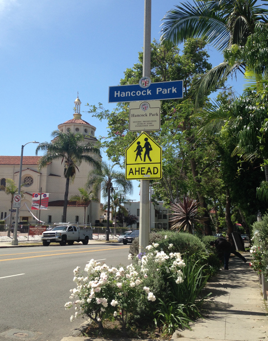 Photo by Adrine Arakelian Photo by Adrine Arakelian Hancock Park is a designated historic district in LA. Signs proudly announce your entrance to the neighborhood, as does the greenery and sycamore trees lining the streets with more consistency than anything else in the city. It is without a doubt the lushest neighborhood of LA, evidence of its wealth and the status of its residents. This is a well-kept neighborhood not known for high crime. According to my friend who once worked for CD4, Councilman Ryu’s district, it is better known for the constant complaints of the homeowners against the apartment dwellers. A battle over the rights to empty streets, over who is parking cars where. In many ways, our homes bring out the most territorial and often the most petty in us. But even the apartments in the neighborhood are no ordinary set of multi-story structures. 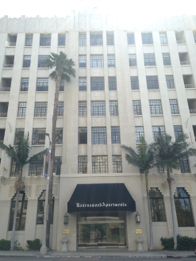 Photo by Adrine Arakelian Photo by Adrine Arakelian I walked around trying to locate Luke’s apartment building, The Marlowe. Google indicated it existed. The Ravenswood is not the building where Luke is supposed to be living, but its clean, vertical Art Deco lines are characteristic of some of the eye-catching architecture in the neighborhood. On a windswept Friday afternoon, it was just I and the hired building landscaping crews out, walking around. Though Rossmoor is a popular north-south byway, so there was no end to the rushed line of cars making their way to Hollywood or Mid-City.  Photo by Adrine Arakelian Photo by Adrine Arakelian I kept walking, in search of the most French-inspired apartment building, per Song’s references to the fleur-de-lis blossoming all the over the structure. While the County Club Manor is without a doubt the most luxurious in appearance, there was not a fleur-de-lis to be found on its edifice. Though its front garden and mansard roof do their best to imitate the French chateau style. If I had the chance to live in this place, I certainly would not turn that down. 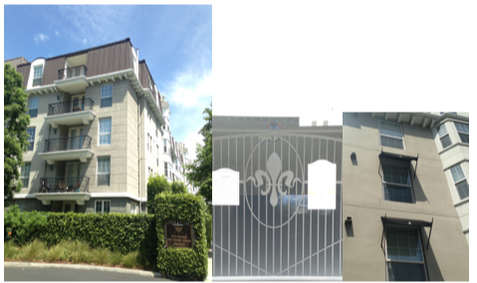 Photo by Adrine Arakelian Photo by Adrine Arakelian However, it was actually the Windsor that Google identified as The Marlowe. I can’t say I was not disappointed. The aesthetic is more in line with nameless corporation does 1990s take on the French chateau. It has the bland, luxury apartment feel we see popping up all over LA with fleur-de-lis stamped all over the place for flair. Given Luke’s character, that he ends up being a disappointment and a failure as a friend, the location and lack of character of his residence is fitting. He doesn’t deserve the Ravenswood or Country Club Manor. I’ve never done a Yelp review, so I’ll end with a Steph Cha’s style Yelp review of one of my favorite eateries in LA, a rare luxurious treat. After my amble through Hancock Park, I made a necessary sustenance detour and kept walking to LaBrea for lunch at Republique. The space was brightly lit, with the sparkling sound of clinking glasses and cutlery. The Smiths played in the background. The light-filled interior is a mash up of an indoor atrium space and an outdoor covered courtyard. White tile gives way to white brick, with a zigzag patterned blue and green ceramic tile floor. The main hall evokes an interior and exterior space at once, with triple height, skylit ceilings and long wooden communal tables. The entryway is lined with glowing jars of preserved lemon and cloves. A delectable row of sweet and savory pastries greets you upon entry. Your eye makes its way panning across the selection, salivating at the endless and overwhelming choice of options. Other than the loud noise of the interior, how can you not love this place? I was seated at the bar, in a slightly dimmer corner of the eatery, with a view into the open kitchen backed with night blue ceramic tiles glistened by the fire of the oven. I ordered a drip coffee, which comes in a tall silver canister, the burrata toast, and a chocolate hazelnut croissant for take-away. The burrata toast had the textural and flavor mix of crunchy, sweet, and roasted vegetables, topped with a sunny side up egg, all laid on top of cheesed toast. A delicate cherry tomatoes burst from its skin and into my mouth, with the crunch of toast and saltiness of the burrata cheese. The porous toast soaked up all the drippings, but maintained the crunch of its crust. I went on my own and there's a luxury in eating alone, the flavors uninterrupted by conversation. I was seated at the bar in between a woman working away at her laptop, with coffee and a pastry, and a platinum blonde woman, in a sleek black dress, a vision of the perfectly coiffed diet-conscious, sipping a chilled white wine and nipping at a salad, red lipstick not even smudged from the meal. Her eyes were glued to her smartphone, the ultimate sign of a high-powered working lunch. Laptops are for the hustling younger set. If Kerouac were alive today, even he might be speaking his next book into his smart phone. Down the bar was a male trio crowding around their tall slices of moist and creamy chocolate cake. I sat back, sipping my coffee and taking in my meal, savoring the mix of sweet, salty, melted crunch, lapping it up to the last dribble. Adrine Arakelian is a life-long student and urban planner. She says, "I care about places and value the pedestrian experience. I process the world through words. PCC is where I started my higher education and has been continued source of enrichment."
Written by Chloe Zofia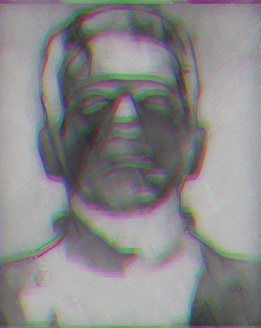 In 2018, we put out a themed Inscape issue centered around Mary Shelley’s legendary novel Frankenstein. The issue was in honor of, and to celebrate the 200th anniversary of the book’s publication way back in 1818. Frankenstein is an important piece of literature for a host of reasons, but the story especially relates to Inscape because we are primarily a staff of young writers dancing and stumbling through life lessons. Many of these life lessons are explored thematically in Frankenstein, from ambition to fallibility, family and society, romanticism and nature, to prejudice and loss of innocence. These topics we hold close to our heart, especially in times of transition, like in college. Artist Ashley Geiger submitted three digital art pieces for Inscape’s 2018 Frankenstein-themed issue. She is an associate professor of humanities hailing from Toledo, Ohio. The three selected digital works of art paint some hauntingly surreal depictions of our 2018 Inscape issue’s guest of honor, Frankenstein. Each of the three pieces has their own individual style, yet as a series they work together as a cohesive body of work. All three pieces are portrait-style interpretations of the Frankenstein character. Two of the images are highly textural, lending a more luscious experience to the viewer regardless of whether viewed on the internet from a screen or printed on paper. The piece pictured to the left employs color in an experimental way, with a primarily monochrome grey image, sprinkled with cyan, magenta and green bits. The result is a mind-altering stereoscopic effect, like those 3-D images they had on the back of early 2000s cereal boxes, the kind that had to be viewed with cardboard glasses boasting one blue lens and one red lens. The art is familiar, yet disorienting-- a perfect nod to Frankenstein’s overall vibe as a half person, half monster. Beyond the obvious relevance to the subject matter to our 2018 theme, the textural qualities of these images suited the Frankenstein character wonderfully. In the first image pictured above, the digital manipulation creates a sort of metallic quality. The surface of what appears to be metal is glistening in the way that a thin layer of oil shimmers when floating on water. The result is mysteriously holographic. Like Frankenstein, the materials depicted in these three works of art tantalize the viewer’s imagination, tickling their curiosity without revealing specifics. “Although I possessed the capacity of bestowing animation, yet to prepare a frame for the reception of it, with all its intricacies of fibres, muscles, and veins, still remained a work of inconceivable difficulty and labour. I doubted at first whether I should attempt the creation of a being like myself, or one of simpler organization; but my imagination was too much exalted by my first success to permit me to doubt of my ability to give life to an animal as complex and wonderful as man.” --Mary Shelley, Frankenstein, Chapter 4 Oftentimes with both art and literature, it is what remains unsaid which can most delight the audience in new and unusual ways, as opposed what is overtly stated. In the case of Ashley Geiger’s three digital Frankenstein-themed works of art, the mystery is as alluring as it is perplexing. Are they dyed linen, etched metal, holographic, 3-D film, or “intricacies of fibres, muscles and veins” like the monster himself…? Here at Inscape, we take pride in showcasing artwork that dazzles the mind as well as the senses. It is for this very reason we decided to select artist Ashley Geiger’s three-part digital series. Chloe says, " I'm submitting a piece I wrote for Inscape entitled "Why We Chose It." It's about why a specific submission was accepted by Inscape, in this case, artist Ashley Geiger's three-part Frankenstein digital art series. Our readers might enjoy an insight on the "why" behind our accepted submissions."
|
IMPORTANT NOTE:
PCC Inscape Magazine, housed at Pasadena City College, is following Coronavirus protocols. At this time our staff continues to read submissions and publish web content. Note:
Blog Posts reflect the opinions of the writer and not the opinions of Pasadena City College or Inscape Magazine Editorial Staff Members. Archives
December 2023
Categories
All
|

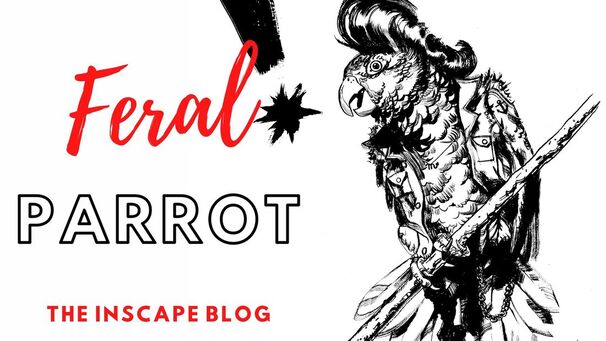


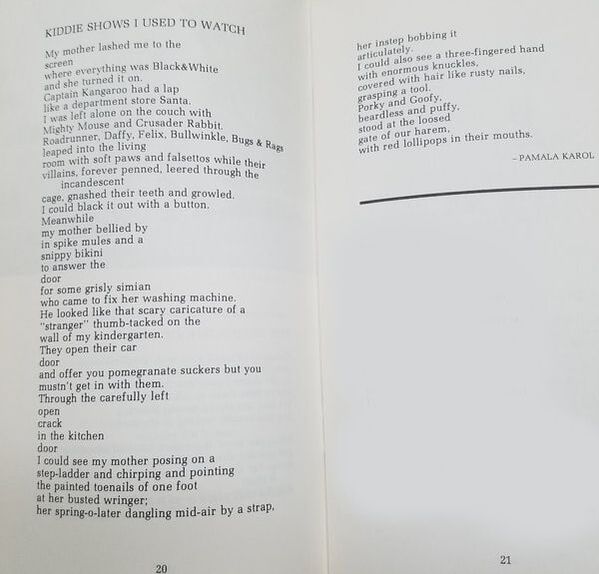


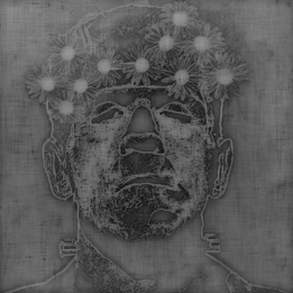
 RSS Feed
RSS Feed